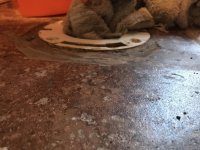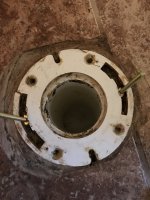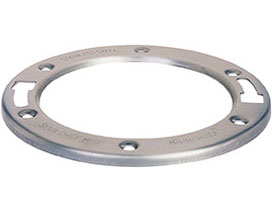sclawrenc
New Member
Hello everyone!
I recently had to plunge a toilet several times and developed a leak at the base. I removed the toilet and found that the existing PVC flange was cracked on both sides and not screwed into the concrete floor. Instead it's just set in the concrete. I also noticed there was a flange spacer on top of this which was only attached the original flange by small screws screwed into the original PVC flange instead of the concrete floor. I believe a wax ring was used between the original PVC flange and the flange spacer. I have attached a picture to show you what I'm working with.
I have some questions on how to proceed.
I recently had to plunge a toilet several times and developed a leak at the base. I removed the toilet and found that the existing PVC flange was cracked on both sides and not screwed into the concrete floor. Instead it's just set in the concrete. I also noticed there was a flange spacer on top of this which was only attached the original flange by small screws screwed into the original PVC flange instead of the concrete floor. I believe a wax ring was used between the original PVC flange and the flange spacer. I have attached a picture to show you what I'm working with.
I have some questions on how to proceed.
- How do I repair the existing flange without pulling it out, cutting it out or cutting up concrete?
- It is currently mostly level with the tile floor so should I raise it up with a new flange spacer? If so, how would you attach the flange spacer to the concrete floor? Use concrete anchors or Tapcon?
- Are there any good solutions where I don't have to drill into concrete? I get a little nervous when I think about drilling into my concrete foundation.
- Once I decide on the path forward, should I use a wax free seal or a normal wax ring?




